Types of Dental Implants
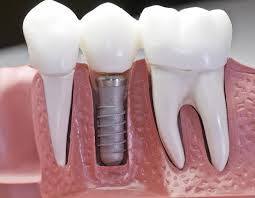
Recently, the demand for implantation has been growing significantly, patients are becoming more aware of the advantage of implantation over other methods of prosthetics.
Implants, unlike other methods of dental prosthetics, provide a person with a better quality of life.
It will be difficult for a person who does not understand the features of implantology to make the right choice in favor of certain dental structures.
There are various types of dental implants on the market, from various manufacturers, with different features. Prices for them also differ significantly.
What material are made of
- In most cases, dental implants are made of a titanium alloy. The content of pure titanium in the finished structure exceeds 99%.
- Expensive models are made of zirconium oxide.
- Low-cost impurities may be present in budget structures, which impede the process of osseointegration and reduce the life of the implant.
- To improve implant survival, some manufacturers create surface porosity by spraying with special compounds. This approach leads to a rise in the cost of construction.
Implant structure
The most common type is an implant, which consists of three parts:
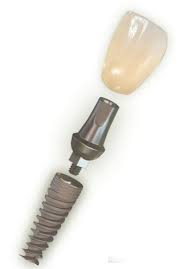
- the upper protruding above the gum;
- a pin threaded for fastening in the jawbone;
- connecting neck.
The models used in implantology differ in design and shape.
- The pin can reach sizes from 6 to 16 mm in length.
- Different models of pins may differ in thread, density.
- Dental implants can be either solid or collapsible.
For one-stage implantation, a non-separable design is used.
Types of Dental Implants
In dentistry, a wide variety of implants are used. If bone tissue is present in sufficient quantity, then nothing prevents the establishment of root-shaped implants.
However, in more difficult conditions, it is more advisable to use other types of implants - with too narrow a bone - lamellar, significant defects of the dentition - an implant of a combined type, and with very strong resorption (thinning of the bone) - subperiosteal (periosteal).
Types of implants, the use of which depends on the condition of the bone tissue
Subperiosteal (subperiosteal) implants
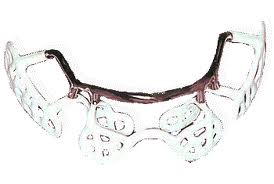
They are used for insufficient bone tissue.
The design has a rather unusual appearance: quite thin and delicate, has impressive dimensions.
- The implant will be positioned on a bone specially made for this purpose.
- In this case, there is no need for bone grafting.
- The implant material will be located under the gum between the bone and periosteum and will have a metal support, which will create a uniform load distribution.
- After installation, the implant tip remains on the surface, and therefore, there is no need to wait until the engraftment takes place to perform prosthetics.
- Implantation can be performed both on the lower jaw and on the upper.
But most often this type of implant is used for installation on the lower jaw.
Endosseous implants
They are the most common designs. They are installed on both the upper and lower jaws.
Endosseous structures can be used to replace one tooth, as well as partial and full edentia.
Endossal implants include:
Root implants
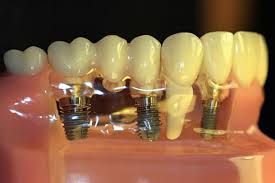
- They got their name, because in appearance they resemble the root of a tooth.
- They are a stepped cylinder with a thread.
- Different manufacturers have different shapes, structures and materials, but at the core they all are titanium screws - self-tapping screws.
Today, root-shaped structures are the most popular.
- They are used if there is a high density of bone tissue, but in the absence of its adequate width and height.
- In some cases, bone grafting may be required to create bone mass.
- Since the root of the implant is installed directly into the bone, such an implant is also called endostal.
- After installing the titanium pin, the gingival walls are sutured.
- The root part of the implant can be installed, both without an abutment, and with it.
- The implant engraftment period is from three to six months.
Combined
These implants are a combination of lamellar and root-like construction.
They can have a complex shape and large size, in the presence of large defects of the dentition.
Implants depending on the shape
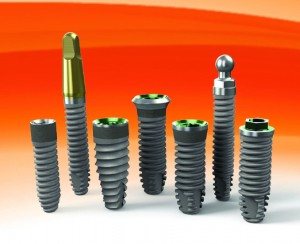
- Screw. In appearance, they are similar to screws. The installation technology of such structures is similar to the installation of self-tapping screws. They are screwed into the bone tissue and take root quite firmly and quickly.
- Cylindrical. They are distinguished by the absence of thread, and the external coating of such a structure has a porous surface, which provides a sufficiently strong and reliable fixation of the structure in bone tissue.
- Plate implants. Lamellar implants are used for narrow bones if implantation with root pins becomes impossible. The flat design has the form of a long narrow metal strip. Through the incision of the gum, the implant is placed in the jaw bone for a long distance, which gives the structure stability. The engraftment process lasts up to six months.
Transossal implants
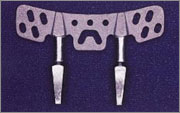
- Transossal structures are plates and pins.
- The plates are adjacent to the lower jaw - its lower edge, and the pins protrude from this plate.
- Some of the pins are inserted into the jawbone, the rest pass through it into the oral cavity and serve to attach the prosthesis.
- Installation of transossal implants is performed under general anesthesia under stationary conditions.
Due to the high morbidity, the technique was not found in modern dentistry.
There are also:
- Endodontically stabilized implants. In fact, they are pins that are installed not in case of tooth loss, but to strengthen the root and extend the life of the existing tooth. This technique is minimally invasive, which helps the healing process go faster and more efficiently.
- Intra mucosal implants. These include mini implants. These are implants that are fixed in the gum and their implantation into the bone tissue is not required. It is used to stabilize partial or complete dentures.Such designs are used mainly to maintain removable dentures. One part of the mount is located on the gum in the form of a button, and the second on a removable structure.
Mini implants
They are standard root-shaped constructions of small sizes.
They are used if necessary to give additional fixation to removable dentures, or when it is impossible to install implants of a standard size.
Features of mini implants:

- The main purpose is the fixation of removable dentures, including those that replace the entire dentition.
- The operation is minimally invasive, that is, there is no severe trauma to the bone and gingival tissues.
- The removable structure can be fixed immediately after the installation of mini implants. There is no need to build bone.
- Mini implants are 3-4 times cheaper than standard designs.
Video: Dental Implants
What are the types of dental implantation
In accordance with the timing of the installation of implants and further prosthetics, there are the following methods of implantation:
- One-stage implantation. This method is characterized by the use of non-separable implants. They are installed in an already formed bone bed in the jaw. The prosthesis is installed immediately or in the first days after implantation.
- Two-stage technology characterized by the fact that at the first stage of the operation, the root part of the implant is installed in the bone bed of the jaw, then the mucous membrane is sutured over it. Prosthetics are performed after complete engraftment of the structure.
- Direct implantation is carried out in one visit to the doctor. With this technique, tooth extraction is performed and an implant is implanted in the alveolar well. The disadvantage of this technique is the discrepancy between the dental implant and the size of the hole.
- Delayed implantation implies implantation of the implant after 8-9 months at the site of tooth extraction after complete bone remodeling.
Implantation can be carried out with bone growth and without building.
- Bone tissue growth is performed with insufficient bone thickness at the site of implant placement.
- A special case of building - sinus lift.
- This operation is performed in the case of a very thin bone of the upper jaw.
- It consists in the introduction of a bone-substituting material with high biocompatibility into the maxillary sinus.
Implantation by type of anesthesia used
- Modern painkillers allow implantation under local anesthesia.
- In severe cases, for example, when restoration of a whole dentition is performed, general anesthesia is used.
It is also possible to use general anesthesia at the request of the patient, if he is very afraid of surgery.
Dental implantation by type of implantable implant:
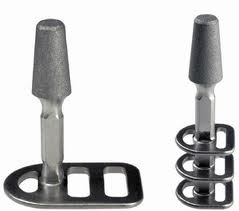
- Classical implants.
- Basal implants.
- Mini implants.
Implantation can be performed using surgical instruments or using a laser.
Dental implantation methods
Depending on the location of the implant, the following are distinguished: types of dental implants:
Intraosseous implantation (endoosal)
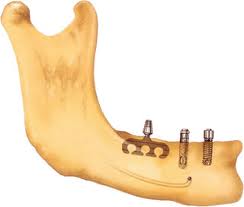
Has received worldwide recognition of implant surgeons due to its high efficiency.
The advantage of this implant implantation method is that the design is established in the most natural way: by direct introduction of the implant into the jaw bone.
This type of implantation presents some requirements for the possibility of its implementation: the presence of a certain height of the alveolar process.
- In case of insufficiency of bone tissue, it is built up by osteoplasty.
- When carrying out endo-axial implantation, root-shaped implants are used, and in the presence of strong bone resorption or atrophy of bone tissue, the use of combined designs is advisable.
- For this type of implantation, it is possible to use both a one-stage technique for installing implants with one-day prosthetics, and a two-stage one.
Basal implantation
Such implantation is used only in some cases: if it is necessary to prosthetics a large number of consecutive teeth, the presence of a small volume of bone tissue with the inability to carry out its extension.
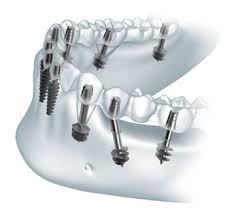
- During the operation, structures are installed in the deep layers of bone tissue on the side, in contrast to root-shaped implants, which are installed on top.
- Basal implantation involves the simultaneous installation of bridge structures.
- This implant placement technology cannot be attributed to the modern type of implantation.
- This technique is not reliable enough, so most experts consider this method only as a temporary solution.
Endodonto - endossal (intradental - intraosseous) implantation
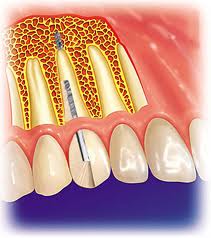
Endodonto - an endossal implantation method is one of the obsolete, which today is almost never used.
The main purpose of this type of implantation was to preserve the root of the tooth. A pin is inserted into the root of the tooth.
Indications for implantation:
- tooth mobility
- bone defects
- periodontal disease
- the presence of cysts,
- tooth fracture, etc. damage.
A prerequisite for this type of implantation is the presence of at least 3 mm of a healthy periodontium around the tip of the tooth.
Subperiostal implantation

Today, this type of implantation is obsolete.
- Subperiosteal implantation was performed in cases of atrophy of the alveolar ridge, bone bed, and bone grafting is not possible.
- The bone size should reach less than 5 mm in height.
- The operation involved the installation of an implant under the periosteum to the lateral surface of the jaw.
- Implantation was carried out both in one and two stages.
Intra mucosal implantation
This technique helps the patient improve the aesthetics of the smile and make wearing removable dentures more comfortable.
- It is used for atrophic changes in the alveolar ridge, in the presence of defects in the development of the palate, when traditional implantation is impossible.
- A prerequisite for such an implantation is the presence of a mucous thickness of at least 2 mm.
- Intra mucosal implantation is also called mini implantation.
The implants are fixed in formed, using a special boron, hole-shaped recesses in the gums. A removable denture is immediately fixed on them.
Transplant implantation
Transplant dental implantation is also no longer used.
- It was used in case of significant resorption of the alveolar ridge of the lower jaw.
- For percutaneous implantation, constructions in the form of a curved bracket with two pins were used.
- The installation was carried out as follows: an incision was made on the outside of the lower jaw, and an arcuate bracket was fixed.
- The introduction of the pins into the bone was carried out in such a way that they passed through it.
- Speaking in the oral cavity over the gums, they served to fix removable dentures.
- To perform such an operation, bone tissue of at least 3 mm in thickness and at least 6 mm in height was required.
Submucosal (submucosal) implantation
It is used to prevent the removal of removable structures, i.e., to improve fixation and stabilization.
Intraosseous - subperiosteal implantation
- It is used to install special designs.
- They combine all the positive qualities of intraosseous and subperiosteal implants.
- At the same time, they do not have their drawbacks.
- They are used for implantation of several front teeth in places where maximum structural stability is required during jaw movements.
Modern methods of implantology
Endoscopic implantation
Modern implantology considers intraosseous implantation with the use of root structures as the most progressive technique, due to which the problem of missing teeth is solved in the most reliable and safe way, taking into account the requirements for aesthetics.
Laser implantation
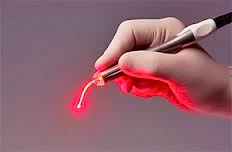
The essence of the method is that all cuts are made using a laser beam.
The advantages of this technology is that the operation is:
- Less painful.
- Less traumatic.
- Shorter in time.
- Allows you to reduce the dose of anesthetics
- Bloodlessness.
- It has an additional bactericidal effect.
- There are no surgical sutures.
- Faster and better tissue healing.
Express implantation
This term is advertising rather than scientific.
This refers to intraosseous implantation using a one-stage technique, when implant placement and prosthetics are performed at the same time as a doctor.
In order to perform rapid implantation, it is necessary to have ideal conditions for the operation - the absence of contraindications, the presence of a sufficient volume of bone tissue and the availability of space for implantation.
Implantation without surgery
- This is also a publicity stunt.
- It is a minimally invasive intranostic technique carried out by the transgingival method.
- During the operation, the gum is not cut, and with the help of special drills, a hole is made in the bone, where the implant is then implanted.
Prices
The table shows the prices of implants from leading manufacturers:
| Implant manufacturer | The cost of one tooth (rub.) |
| Nobe Biocare (USA) | 40000 — 70000 |
| Astra Tech (Sweden) | 30000 — 45000 |
| Straumann (Switzerland) | 40000 -50000 |
| Dentsply friadent | 20000 — 30000 |
| Schutz (Germany) | 18000 — 30000 |
| Zimmer (USA) | 19000 — 31000 |
| Niko (Russia) | 23000 — 28000 |
| Mis (Israel) | 15000 — 25000 |
There are also budget implants, the cost of which from 7000 up to 17000 rubles. The quality and durability of such structures are appropriate.
The above prices do not include crowns. On average, the cost of one crown is about 15000 rubles.
If dental implants are performed using a laser, the price will be approximately 20% - 30% higher, depending on the category of clinic.
Reviews
- I had only four teeth on the upper jaw, and 5 teeth on the lower jaw. The idea that I would have to wear a removable prosthesis for the rest of my life depressed me greatly. The dentist said that in my case, you can have a basal dental implant. I was very surprised, because before implantation was not discussed at all in connection with atrophy of the jaw bones. Of course, I agreed. Now I have beautiful teeth, I can smile and not deny myself my favorite foods.
- For many years I used a removable denture. The dentist suggested putting implants. I agreed. Before the operation, anesthesia was performed. Four implants were placed for approximately two hours. After the option, everything went well. She took antibiotics and drank pain medication for two days. By the fifth day, the pain was gone completely. Implant engraftment took place over a period of six months. Zirconium prostheses were installed. I am very happy with my teeth and do not hide a smile.
- I am 70 years old. A lot of teeth were missing, both on the upper jaw and on the lower. The removable denture was very uncomfortable. Constantly flied when chewing, rubbed gums. During the conversation, diction suffered greatly. I went to the doctor. I was offered to install mini implants. The operation was carried out quickly, almost no pain. A removable denture was immediately fixed. I am very pleased with my new teeth.
- Installed six implants on the lower jaw. The operation was performed using a laser. The whole process did not last long, and there was no pain. In the postoperative period, antibiotics and pain medications were prescribed. The next day there was no edema, the pain disappeared on the fourth day after the operation.
- Two years ago, immediately after tooth extraction, an implant was installed. The operation was quick, painless. Immediately installed a temporary crown made of plastic. The next day there was no pain, edema too. I only remembered the implant when I brushed my teeth. Six months later, she put in a cermet crown.